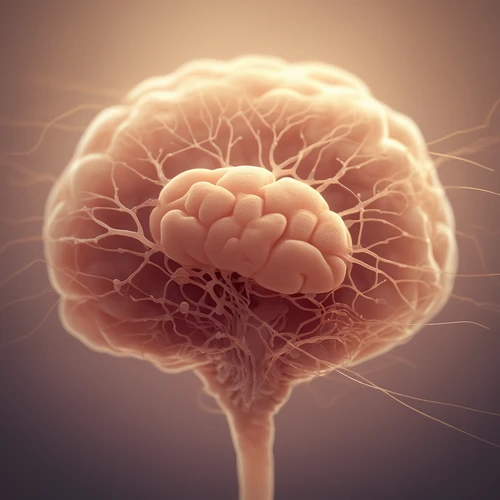The human brain develops progressively throughout life, following a hierarchical sequence where basic functions like movement and sensory perception are established first, before advancing to more complex abilities such as decision-making.
Led by Principal Investigator Dr. Theodore Satterthwaite, researchers from the University of Pennsylvania and other institutions conducted a study aimed at understanding how the thalamus contributes to the brain's development over time. The findings were published in Nature Neuroscience, revealing that the thalamus plays a crucial role in regulating both the sequence and timeline of brain development.
Nature Neuroscience"Our team has been investigating how different areas of the human cortex exhibit varying periods of neuroplasticity during childhood and adolescence," explained Dr. Valerie J. Sydnor, first author of the study. "We found that reductions in plasticity occur hierarchically across cortical regions, from sensorimotor to association areas."
Following the discovery of this development sequence, Sydnor and her colleagues sought to determine which processes regulate the timing of development for different cortical regions, by building on early studies involving other animals.
"Rodent research indicated that the thalamus could influence plasticity in cortical regions through structural axonal connections,"Sydnor said. "However, these findings had not yet been tested in humans."
Inspired by earlier rodent-based research, the scientists studied human brain adaptability during youth by examining structural links between the thalamus and cortical areas to determine if they influenced observed changes.
A non-invasive neuroimaging technique called diffusion magnetic resonance imaging (dMRI) was used for their experiments. This method allows mapping fiber tracts connecting different brain regions based on water molecule movements.
Nature Neuroscience"Diffusion MRI is a powerful tool that helps us identify large-scale neural connections by tracking how water molecules move along them," Satterthwaite explained. "We examined dMRI data from youth aged 8-23 from three distinct groups: 1) Philadelphia (N=1,145), 2) Minnesota, Massachusetts, California and Missouri (N=572), 3) New York City youth with significant mental health symptoms (N=959)."
To perform their analysis, the researchers developed a new atlas of human thalamocortical structural connectivity, identifying over 200 connections between the thalamus and various cortical regions in study participants.
"Historically, the thalamus has been seen as a simple 'relay station' for sensory and motor signals to reach the cortex," Sydnor noted. "Our data suggest that it plays an active role in determining when cortical areas are plastic and thus adaptable or vulnerable."
Notably, the team observed that maturation of structural connections between the thalamus and cortex follows a sensorimotor-to-association sequence, indicating that cortical development in children and adolescents is linked to shifts in connection strengths with the thalamus. This implies that the thalamus may act as a "timekeeper" for cortical development.
"This discovery is crucial because it links cortical maturation pace with cognitive and psychological outcomes," Sydnor pointed out. "Regions developing longer thalamic connections exhibit prolonged plasticity during adolescence."
Ultimately, these findings could offer insights into interventions that promote healthy child and adolescent brain development by leveraging environmental influences on thalamocortical connectivity.
"In the future, it would be interesting to continue identifying how environmental factors influence developmental trajectories through thalamocortical strengthening," added Sydnor. "This research will help us understand how enriched environments might foster cortical plasticity."
Originally reported and carefully fact-checked by our team including Ingrid Fadelli, Sadie Harley, and reviewed by Robert Egan. This article is a product of diligent work. If you find this content valuable, please consider donating to support independent science journalism. Every contribution counts (especially monthly). A thank-you gift of an ad-free experience awaits your support.
ad-free

